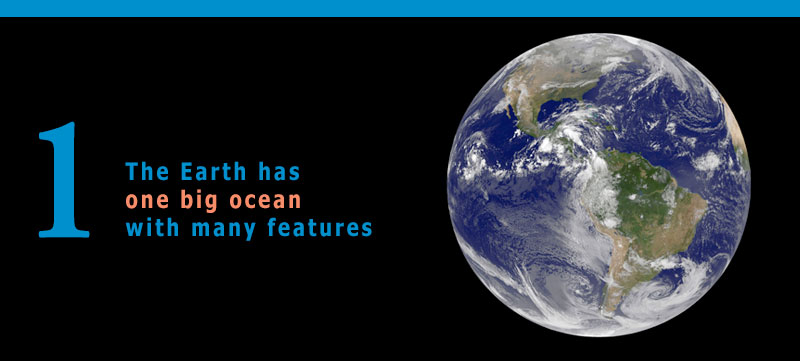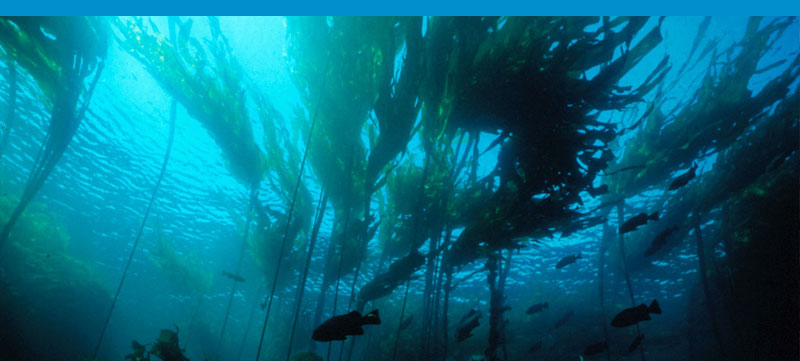One Big Ocean
The Ocean Literacy Principles Series

For the next seven weeks we are discussing the concept of Ocean Literacy. In a series of premises defined by educators as fundamental to our understanding of ocean systems is the following:
The Earth has one big ocean with many features.
This first of the seven Ocean Literacy principles would seem obvious, but not so fast. There are some assumptions within that are worth a bit of emphasis. First: what is the actual physical relation of ocean to earth? We know that the ocean covers 71% of the earth’s surface; that some 97% of the water on earth is salt; that of the remaining 3% that is fresh, two-thirds is frozen, for now, in the polar caps. But what is the mass relationship of ocean to earth? I will spare you the math, but scientists have concluded that the ocean represents just 1/4400th of the total earth’s mass, 71% of surface coverage equating to .02% of the planetary total, an astonishing calculation of relative volume. Let me argue here, then, that the relative impact of scale, ocean to land, is a very imbalanced equation between the productive value of the ocean / freshwater continuum and the land. This is more fully exaggerated if you include the reasonable observation that the productive value of the land shows evermore critical warning signs of exhaustion. Each year, we calculate the day when what the land produces can no longer meet the needs and demands of its population, and each year that day comes earlier indicating a production deficit that can only be met by increased exploitation of the ocean.

Secondly, the premise asserts that there is only one ocean, not seven seas, but one integrated oceanic system that connects us all, even as we are separated by continents, politics, economic development, and cultural traditions. This, too, appears not so obvious when you understand that our governance, historical exchange, patterns of settlement, and social organization has been almost exclusively land-based. Only with the most recent realization of globalization, that is the interconnectedness of all nations and all peoples, has the world come to understand the unifying reality of the ocean and its undeniable force for the future.
Third, the premise affirms the existence of the ocean’s many features: its still unfathomable catalogue of marine life and processes; its measure as integrated global natural system that circulates and exchanges worldwide with calculable impacts on weather, agriculture, food production, coastal settlement, security, and other acknowledged natural outcomes, but also in the acceptance of its social connection through economic development, exchange of manufactured and processed goods, financial transfer, worldwide communications, and the increasing force of intellectual property and invention.

Watershed River Basin Map | Etsy Shop: Grasshopper Geography, Robert Szucs
The Earth has one big ocean with many features.
This simple sentence reveals a complicated system that has not been fully understood, not been taught in our educational system, or used as a foundation for the organization and re-organization of our policies or our constructive evolution of new concepts and ideas for change, future development, and the demand for sustainability of best practice on land and sea. To accept this first premise is to accept an entirely new way of knowing the ocean, establishing the extent of its future production and protection, and its inevitable and urgent meaning for continuity, sustainability, equity, justice, and peace in the 21st century.
We can visualize these connections: the re-emphasis of integration over separation in our global depictions; the measurable impacts and predictions of climate change; the depiction of watershed connection is Europe and South America; the ocean conveyor that distributes heat, protein, and persistent pollutants with equal efficiency; the routes of ships engaged in international transport and trade; the shifting population from heartland to coastal concentration; and many, many more examples of the many features of one big ocean.
- - -


